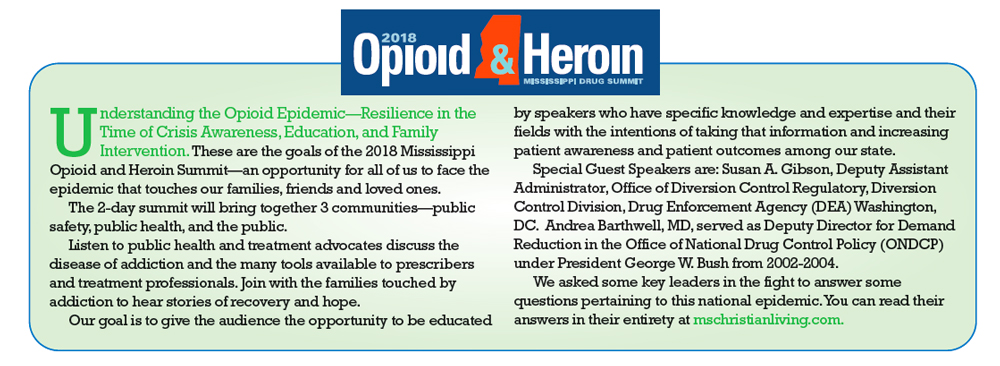
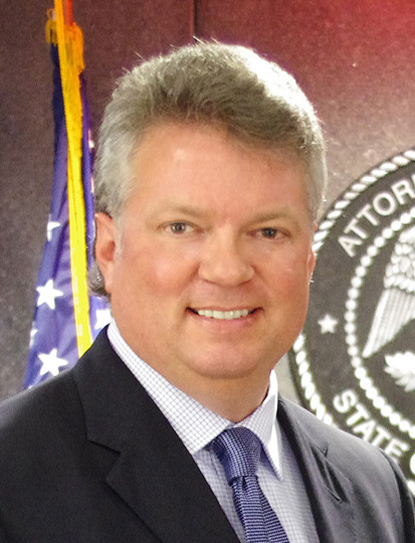
Jim Hood
Attorney General of Mississippi
What strides have been made in the last year to address the problems of opioid and heroin addiction in Mississippi?
The discussions state and local officials are having and the many awareness campaigns that are out there have made “opioid” a household name. That can be seen as a good thing in the sense that it means those conversations and actions are setting in with people who then take that discussion to their dinner table or their church group and warn others of the dangers of the pill’s addictive nature.
Additionally, the work of the Mental Health Task Force, which was established last October and on which I serve, has a subcommittee that is dedicated to addressing the variety of issues related to opioids. That committee is currently working to increase access to mental health services for persons that are unable to pay for substance use disorder treatment or do not have access to transportation to a treatment center.
Another issue the task force is addressing is record-sharing between drug and alcohol commitments and mental health commitments. Sharing data allows a better understanding of all aspects of someone in treatment. Using the medical, legal, and socio-economic data of a person in treatment will better identify populations at risk and evaluate gaps in treatment.
Finally, the task force is also working to build peer support networks for persons in recovery throughout our state by partnering with NAMI (National Alliance on Mental Illness) and Faces and Voices of Recovery in Mississippi. Through our collaborative efforts, I believe we can make positive changes in how mental health and substance use treatment services are provided and accessed by the public.
What legislation don’t we have that might take us farther down the road of solving this problem?
On the national level, I’ve voiced concerns to health insurance companies about the lack of coverage for alternative pain management options. Right now, many insurance companies cover opioids, which, under those plans, are not as expensive as less addictive pain medicines or therapies. People shouldn’t be forced to buy opioids that will get them addicted just because it’s cheaper. The way the system is set up is literally killing people.
I’ve also asked members of Congress to support two measures (CARA 2.0 and CARES Acts) that would place stiffer penalties on opioid manufacturers who do not flag suspicious shipments of the drug. If passed, the civil penalty would increase from $10,000 to $100,000 per violation, and the criminal penalty would double to $500,000 for companies that knowingly fail to keep proper reporting systems or fail to report suspicious activity. These manufacturers have a duty to take steps that prevent drugs from entering the illicit market and devastating our communities.
On the state level, Mississippi would greatly benefit from mental health courts. The establishment of these courts would link persons who would ordinarily be prison-bound to long-term community-based treatment. This idea could be compared to our state’s drug court program, which has been very successful in giving the participants the opportunity to remain in the community while seeking treatment instead of being incarcerated.
Mental health courts would lessen the burden of our county sheriffs who frequently have to incarcerate individuals with severe mental health issues.
We tried to get mental health courts established in the state by way of two bills this past legislative session, but both bills died. If our legislators would prioritize taking care of this population, it would not only be a cost benefit to the state by creating this court, but it could also save someone’s life and get them on a road to being a more productive citizen.
Finally, I have pushed for the development of new prescribing rules for healthcare professionals that would curb patients’ abilities to prolong unnecessary opioid prescriptions. These rules are currently in the approval process. This would not take away prescriptions for patients who truly need it—such as those who have terminal disease pain or are in hospice care. These rules would be meant to stop the overprescribing of long-acting opioids to those who have acute non-cancer or non-terminal pain, and the rules would distinguish between chronic, acute, and terminal disease pains. I understand that some people truly depend on opioids to deal with pain that is life-altering; however, it is our responsibility to make sure our prescribing practices do not continue allowing patients who have alternative pain management options to have a prescription so vast that it leads to addiction or death. The Board of Nursing is still drafting rules, while the Boards of Pharmacy & Medical Licensure have drafted, approved, and now placed their proposed rules before the Occupational Licensing Review Commission for approval.
What is your greatest fear with the epidemic?
The death toll rates for young people are increasing rapidly. I fear this high death rate will impact us in ways in which we can’t yet measure with the loss of young people, mothers and fathers, and budding professionals to opioids—or heroin, if they have gotten off of opioids. We have to start early with educating our parents and children about the dangers associated with the use of this drug.
What are some of the initiatives your office is taking on regarding opioids?
In addition to the previously mentioned work of the Mental Health Task Force, our office was the first to sue multiple opioid manufacturers on behalf of a state. We argue that these companies misled consumers about the dangerous effect of opioids by marketing the drug as rarely addictive. It’s our belief these manufacturers (16 in the suit) deceived Mississippi Medicaid, doctors, and consumers in order to boost profits at the expense of innocent victims. That lawsuit was filed in Hinds County in December 2015.
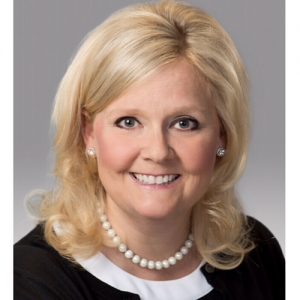
Ruth Ann Rigby
CHAIR, 2018 Opioid and Heroin Summit
Capstone Treatment Center, Director of Business Development
Why is the Opioid and Heroin Summit so important for people to attend?
Our Mississippians are struggling with addiction and other issues at an alarming rate. Unfortunately, the disease of addiction does not discriminate, it doesn’t care what socioeconomic background you come from; its goal is to take you down a path of destruction. At the Summit, our goal is to provide great speakers for education for everyone, whether you are a physician, therapist, counselor, teacher, school counselor, pastor, Sunday school teacher, or a first responder, we have something for you at the Summit. Our goal is to give the audience the opportunity to be educated by speakers who have specific knowledge and expertise in their field with the intentions of taking that information and increasing patient awareness and patient outcomes among our state.
Is there anything for families this year?
The Family Forum on Thursday, July 12, is really for anyone—but families who are struggling and not knowing what steps to take next are especially encouraged to come. We want to answer the questions that make this make sense for you. We can help them at Summit to gain awareness and understanding and want those attending to walk away knowing what some of the risk factors are and what to do next. There will be many professional therapists and treatment providers on hand to offer assistance.
What is the perfect storm that creates an addiction for a person you would never dream would become addicted?
That is a great question: No one wakes up one day and says, “ I think I will become an addict.” It’s usually something very deep and traumatic that has happened to them and they are numbing—with alcohol, legal and illegal drugs, or whatever they can— all the pain they are experiencing with drugs. The important thing to realize is that there is help available for everyone. You just need to take that first step by asking for help.
The storm you are referring to could be an athlete that had a long career in sports and in an instant his life changed. He may have been drinking alcohol already and then added pain medication to the mix and this is a deadly combination that will create a perfect storm. It could be someone that had an unthinkable trauma happen to them and they got some relief and then it just grew and grew into their perfect storm.
We want to stop the cycle; we want to stop families from losing loved ones. We want to help you!
What is the best way for a family member to facilitate an intervention?
First, the most important thing you need to do is to partner with a professional—therapist, counselor, or pastor. I always recommend these books for families to use as tools:
Love First by Jeff and Debra Jay
Codependent No More by Melody Beattie
It Takes a Family: A Cooperative Approach to Lasting Sobriety by Debra Jay
Where can we learn more about the Summit?
Visit drugsummit.com for complete information on the schedule and speakers for the event.
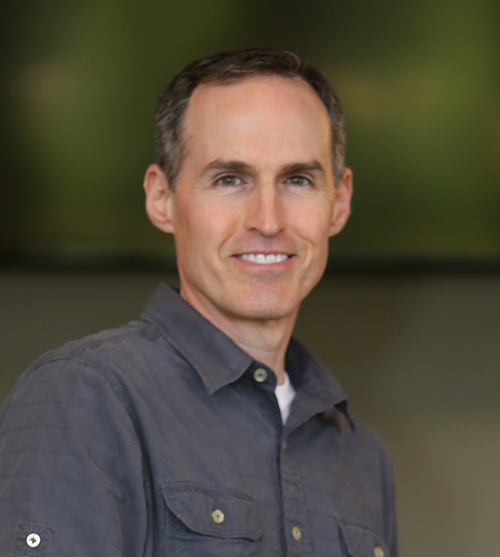
Preston C. Crowe, Ph.D.
Marriage and Family Pastor
Director of The Center for Hope and Healing
Broadmoor Baptist Church
Why is Broadmoor a Host of this event?
For well over five years, Broadmoor has attempted to step into the world of addiction/recovery ministry. While we know that we don’t have all of the answers, our role as a church gives us a unique vantage point to bring to the conversation. Because of that, we have tried to be a part of local meetings, conferences, and seminars related to drug use and abuse in our area. We wanted to demonstrate to our community and state that we are passionate about being part of the solution to the opioid epidemic by hosting the Summit.
How can churches offer help to those who are affected by this epidemic and how can those affected believe that they will not be stigmatized or looked down on by coming for counseling in a church environment?
Many people are under the wrong assumption that they have to “have it all together” to come to church. However, in reading about the life of Jesus, he spent most of his time reaching out to those who were struggling in various ways. One of the best things churches can do to help those struggling with opioid or other drug abuse is to talk about these struggles without condemnation. Open dialogue reduces stigma and demonstrates to both addicts and their families that the church is a place of help and support.
Allowing people within the church who have battled addiction to give their testimonies is a great way to open doors of dialogue. It is important for pastors to touch on this topic from the front of the room, but equally important for churches to release their members to share their own stories of hope. The testimony of someone else who has walked the same road is a great way to increase the comfort level of those who may also be struggling.
Addicts and their families also need a place of community where they can build healthy relationships and support systems. Churches have historically provided such relationships both through the day-to-day ministries offered as well as through opening their doors for recovery groups to use their facilities.
Though there will always be exceptions, I believe most addicts and their families will find that counselors associated with local churches will be their biggest ally in the fight—ready to provide sound spiritual guidance along with best therapeutic practices in a supportive, non-judgmental atmosphere.
What would you want a struggling addict to know if they are too ashamed to seek help?
Everyone struggles with something. Everyone. While it is commonplace to assign levels of grievousness or acceptability to a struggle, at the end of the day they all remind us that we are humans living in a fallen world. The levels of consequences for our behaviors may be vastly different, but the internal tug-of-war that accompanies these behaviors is always similar. This is heightened in addictive behavior because the struggle is repetitive and often feels so out of control. That “repetitive failure” is one of the reasons shame finds a foothold.
Shame has always been one of the biggest hurdles for an addict to overcome in reaching out for help. Shame is a tool of the Enemy. He is both the Tempter and the Accuser. He tempts us to open the door to destructive behaviors and then accuses us of being failures when we struggle to stop. I would want addicts to know that the vast majority of professionals in this field, along with the vast majority of churches and clergy have no intention of shaming them, but sincerely desire to help them become healthy.
One of the best “shame breaking” behaviors an addict can do is to reach out for help. It is a way of saying, “I don’t know if I can stop on my own. What I do know is that I can ask for help along the way.” Whereas addiction is an “out of control” behavior, reaching out for help demonstrates great strength and self-control. Shame has no place when we are doing the next right thing by asking for help!
What services do you provide at Broadmoor and the Center for Hope and Healing?
We are blessed to be part of a church that feels called to this fight. Because of this, our church and its counseling arm, The Center for Hope and Healing, partner to provide counseling, support, education, and guidance for those struggling with addiction and for their family members. On a regular basis, we have a support group for addicts and families meeting in our church through our Courage to Recover ministry. Our church also tries to open its doors as often as reasonable to others who are likeminded in the desire to help addicts and their families, such as an AA group that meets at Broadmoor on Friday nights.
Through The Center for Hope and Healing, we offer professional and pastoral counseling for addiction as well as many of the underlying or surrounding issues such as depression, anxiety, co-dependency, and trauma. We routinely walk with family members who have a loved one in active addiction or in treatment. Through our counseling team and our professional connections, we offer help to families who need guidance to place a loved one in short or long term treatment. Our Certified Life Coaches round out our treatment team helping clients to look ahead to the future and map out the best route to get there. It has been a joy to see people’s lives changed, renewed, and re-purposed over the years. We look forward to witnessing the next one!
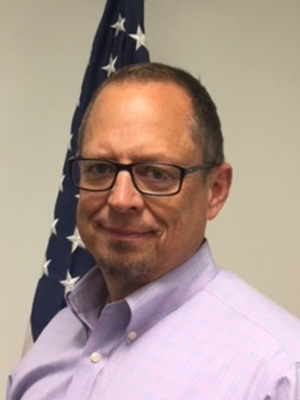
Derryle Smith
DEA Assistant Special Agent in Charge
Jackson District Office
Why are we in a firestorm of this epidemic?
Almost 4 million people in America are addicted to prescription painkillers, including a quarter-million adolescents. Some people who become addicted to these drugs started taking them under a doctor’s care for chronic pain, but others use them recreationally to get high. Due to the overwhelming abuse of prescription drugs, the U.S. has seen an increase in new heroin users. While the vast majority of nonmedical users of opioid prescription drugs do not go on to use heroin, 80 percent of new heroin users started by abusing opioid prescription drugs.
What is the greatest challenge that you are seeing?
Of significant concern is the increasing presence of fentanyl on the illicit market with law enforcement reporting and public health data indicating higher availability, increased seizures, and more known overdose deaths from fentanyl and fentanyl derivatives than at any other time since the drugs were first created. Fentanyl is lethal at the milligram level, whether through ingestion, or if it is absorbed through the skin. The trafficking of fentanyl, which is many times more potent than street level heroin, presents a significant risk of overdose to users as well as a risk to the law enforcement personnel who may come into contact with the substance during the course of their work.
What can we do to help in the effort of helping those with this struggle?
We all bear some responsibility for this (opioid abuse/addiction) problem—everyone in the supply chain ranging from manufacturers to consumers. Physicians and pharmacists should be aware of “red flags” that signal a person may be abusing or selling the medication. Everyone—including DEA—needs to talk about how dangerous these substances can be so that we can begin to change behavior.
DEA has a robust demand reduction program: Operation Prevention, Chasing the Dragon, and Take Back Program.
Operation Prevention:
www.operationprevention.com
- The DEA partnered with Discovery Education, a division of Discovery Communications, to develop and distribute a science-based education curriculum to middle and high school students, their teachers, and parents about the danger of misusing prescription painkillers and heroin.
- The goal is to educate kids about the science of addiction, the potentially deadly consequences of prescription opioids and heroin and to kick-start lifesaving conversations in the home and classroom.
- Available at no cost to schools nationwide, it includes resources such as standards-aligned lesson plans, interactive student activities, parent resources and more—all available through an online portal. It will run for at least three consecutive school years (through Spring 2019) and will be free for all to use and distribute.
Chasing The Dragon Film:
- Available to watch or download at www.dea.org, this film is a way to tell the raw truth of how dangerous this problem is in our country. Each person going through opioid and prescription drug abuse has a similar story—from how they got hooked and how quickly the addiction took hold, to how fast his or her life spiraled out of control.
- We made this documentary, which is at times raw and uncomfortable, to help drive home the message of how deadly of a problem opioid abuse has become across the country.
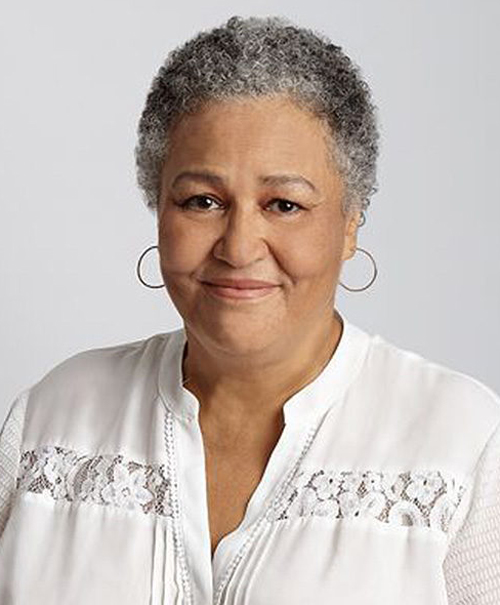
Andrea G. Barthwell, MD, FASAM
CEO, Two Dreams Encounter Medical Group
What are the red flags physicians need to be aware of in an addiction in progress?
Patients who have an addictive disorder have a primary, chronic disease of brain reward, motivation, memory and related circuitry. Dysfunction in these circuits leads to characteristic biological, psychological, social and spiritual manifestations. This is reflected in an individual pathologically pursuing reward and/or relief by substance use and other behaviors.
Addiction is characterized by inability to consistently abstain, impairment in behavioral control, craving, diminished recognition of significant problems with one’s behaviors and interpersonal relationships, and a dysfunctional emotional response. Like other chronic diseases, addiction often involves cycles of relapse and remission. Without treatment or engagement in recovery activities, addiction is progressive and can result in disability or premature death.
A patient has a problem when I can identify two or more of the following problems:
- Using more or longer than intended in a single episode, so stopping by the bar for one drink on the way home and getting home at dawn
- Wanting to cut down but not being able to; so reporting to me that he has tried to stop but can’t
- Spending time getting the drug, using the drug and recovering from the use of the drug only to do it again; so reporting to me that he is unable to go back to work after lunch because he is out buying drugs to use
- Craving or desire to use; so telling me that he is thinking about using and wanting to use a lot
- Using that interferes with a life role; so a student tells me that she was not able to study for midterms because she was using too much and was put out of school
- Continued use despite consequences; so a patient uses alcohol despite being told that he has liver disease and may lose his liver if he drinks again, then drinking again
- Alcohol or drug use causes the patient to stop or decrease involvement in important work social, or recreational activities; so a patient tells me that she no longer paints because she is drinking every afternoon
- Use in physically hazardous situations; so a person reports to me that he has a DUI
- Use despite consequences; so a person is evicted because of drug use and keeps using.
Additionally, the person may have tolerance- needing to use more to get the same or desired response, and withdrawal- where there are severe physical consequences when the person stops using.
If I find two or more of these issues on an interview I know the person has a problem, the problem is moderate with four or five issues, and severe if there are six or more problems.
Some physicians who are in general practices may not do an interview to diagnose the problem but may be concerned when the physical consequences of alcohol or drug exposure are found on physical exam. If that is the case, the patient needs a focused interview and labs to identify why the problems of alcohol or drug exposure are showing up (such as liver disease or heart arrhythmia).
Another way patients present is with complaints of problems associated with alcohol or drug use. So, a patient complaining of insomnia and seeking medication for it needs an evaluation for alcohol or drug use as the cause.
Patients sometimes suggest a problem when they show behaviors associated with problematic drug or alcohol use. A patient who smokes cigarettes has a substance use problem and other problems should be sought and treated if necessary. A patient who reports using a lot of caffeine should be evaluated for other problems. A patient who is asking for a specific substance to be prescribed may be broadcasting a problem with a substance (so a particular pain medicine by name). Also, patients with repeated injury should be evaluated for substance use disorder. Finally, if medications with abuse potential are prescribed and a patient is presenting for refills too soon or too often, or reports losing prescription medication, should be evaluated.
How do you address the issue when you suspect a patient is getting too dependent on a drug?
- Interview the patient and ask direct questions
- Look for consequences then ask about use
- Screen for concomitant medical conditions
- Conduct a Physical exam (comprehensive assessment)
- Order Laboratory testing looking for consequences of alcohol or drug exposure, such as Liver enzymes, and consider testing the urine for substances
- Pregnancy testing & contraception query- to make sure we know if there is a fetus that is being exposed
- Mental health & psychiatric assessment
- Evaluation of past & current substance use- ask the question as if we expect the truthful response. So- when was the last time you used alcohol? When did you last use cannabis? NOT- You don’t use drugs, do you?
- Tobacco use query & cessation counseling, as use of tobacco is associated with alcohol and other drug use
- Social & environmental factors assessment- including history of exposure to violence
If the evaluation confirms the diagnosis then:
- History & physical exam
- Use scales to measure withdrawal symptoms, or intensity of dependence (Fagerstom for tobacco, COWS and SOWS for opioids, CIWA for alcohol, etc.)
- Frequency of urine drug testing determined
In order to help the patient stop using medications for withdrawal are used and are preferred to abrupt cessation
- Advise patients medications alone for withdrawal not a complete treatment method
- Medical history & physical exam focus on withdrawal signs & symptoms
What can families do to help their loved one?
Families need to know that they cannot help their loved one if they do not get help themselves. I suggest that family members go to Al-Anon or at least family session provided by the treatment provider.
What can families do if their loved one is resistant?
Your loved one will not change if you do not. Stop focusing on the user and gain control over your own life and choices and take care of yourself. If all else fails, get a treatment professional to do an intervention. Many result in the person going to Treatment, but if your loved one does not go to treatment right away at least you will not be supporting the use anymore.